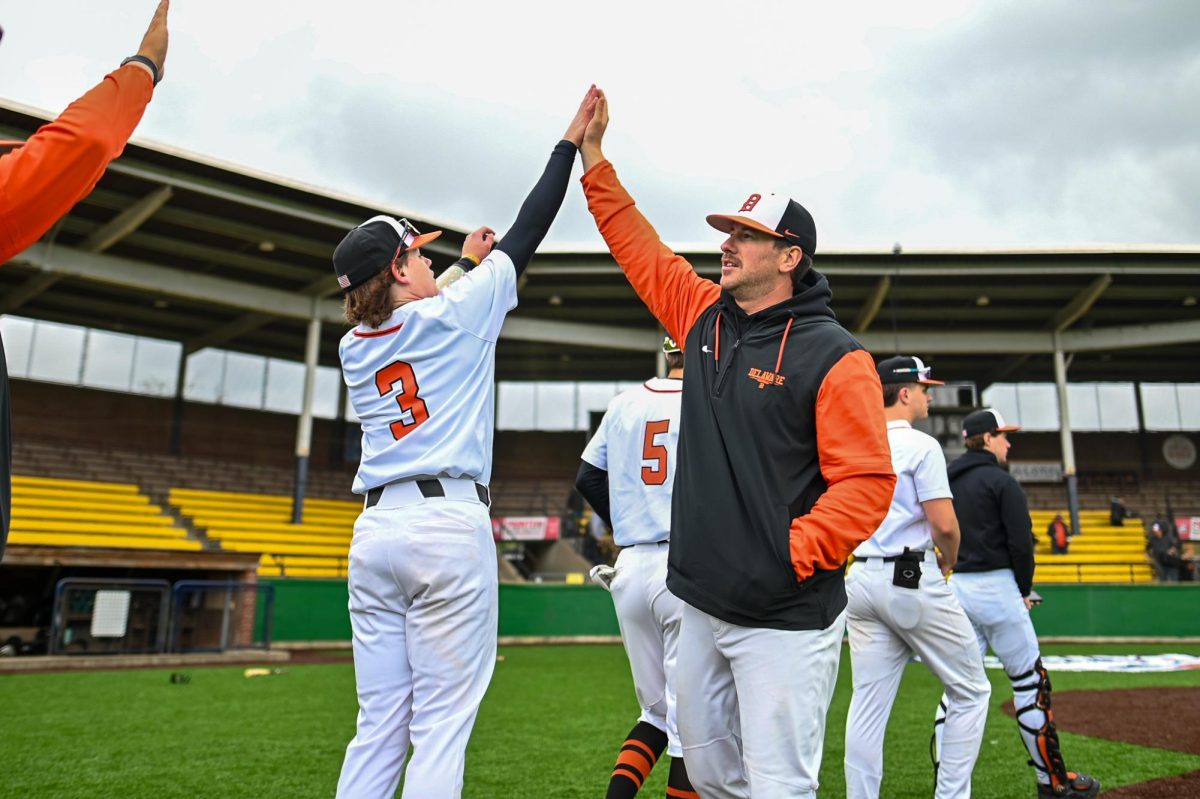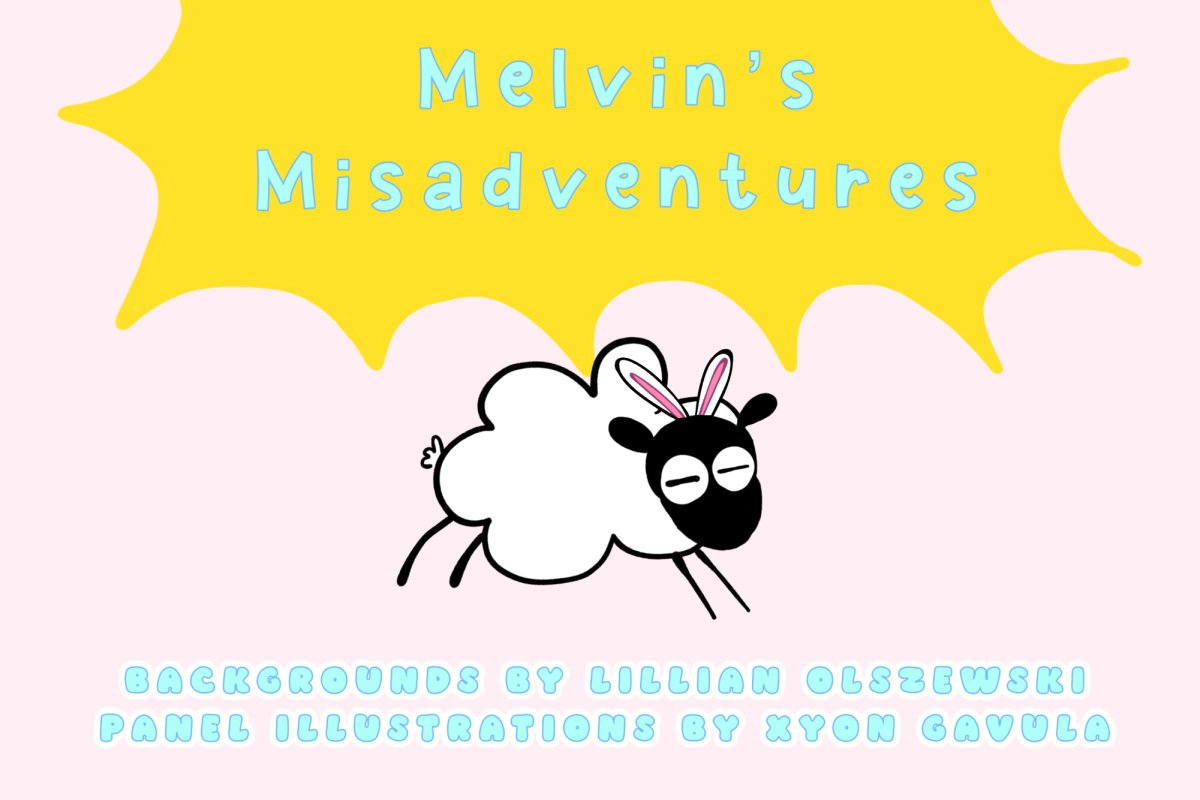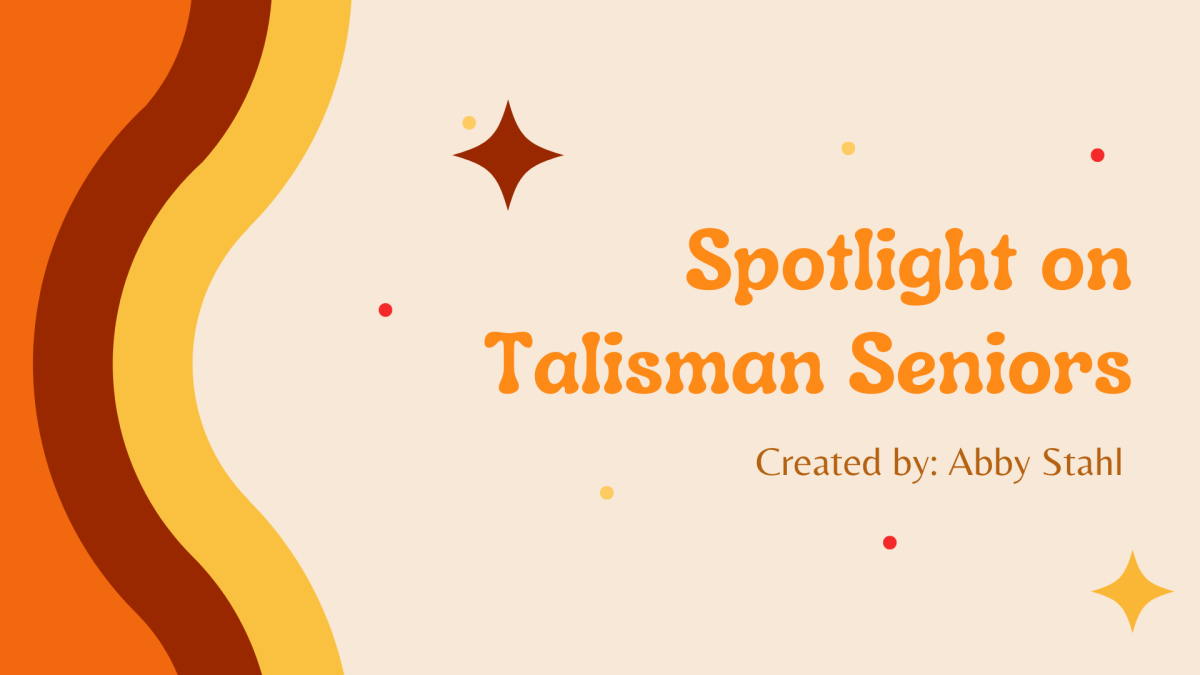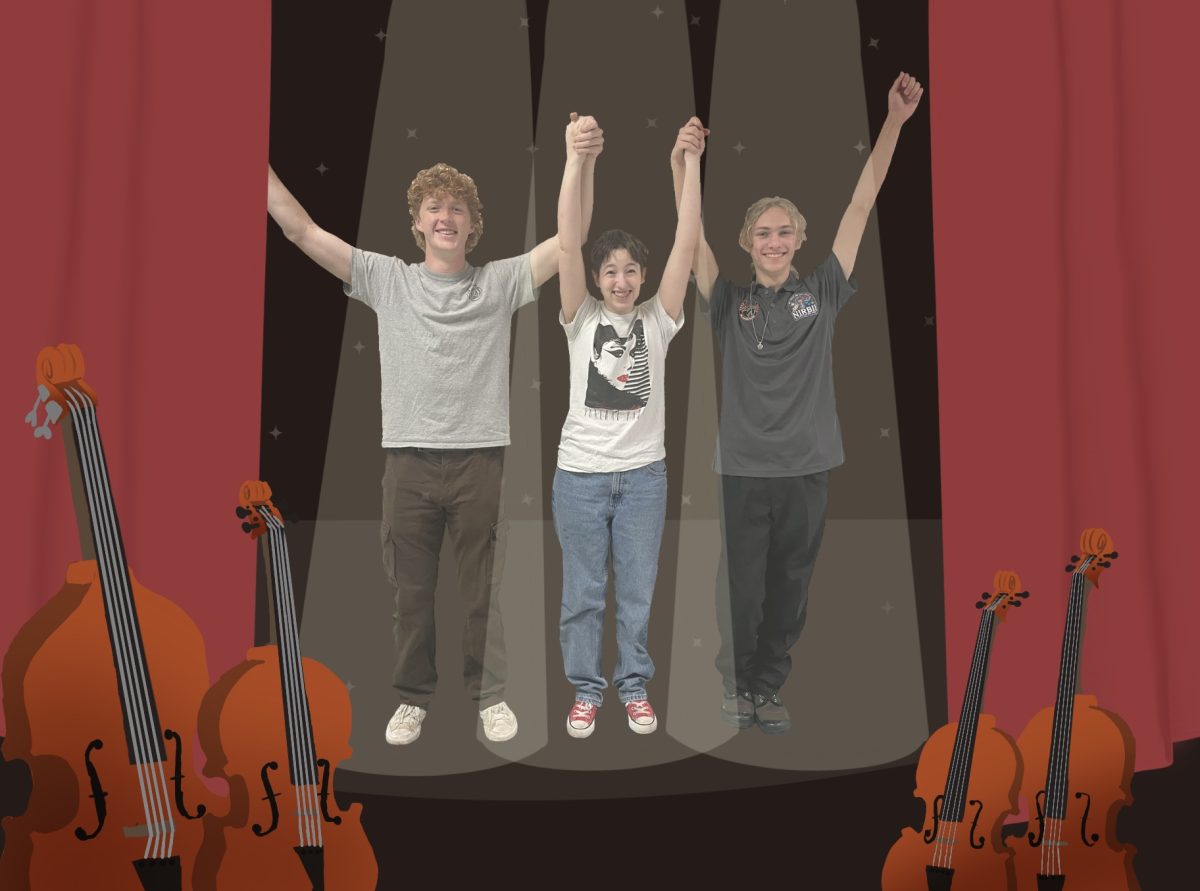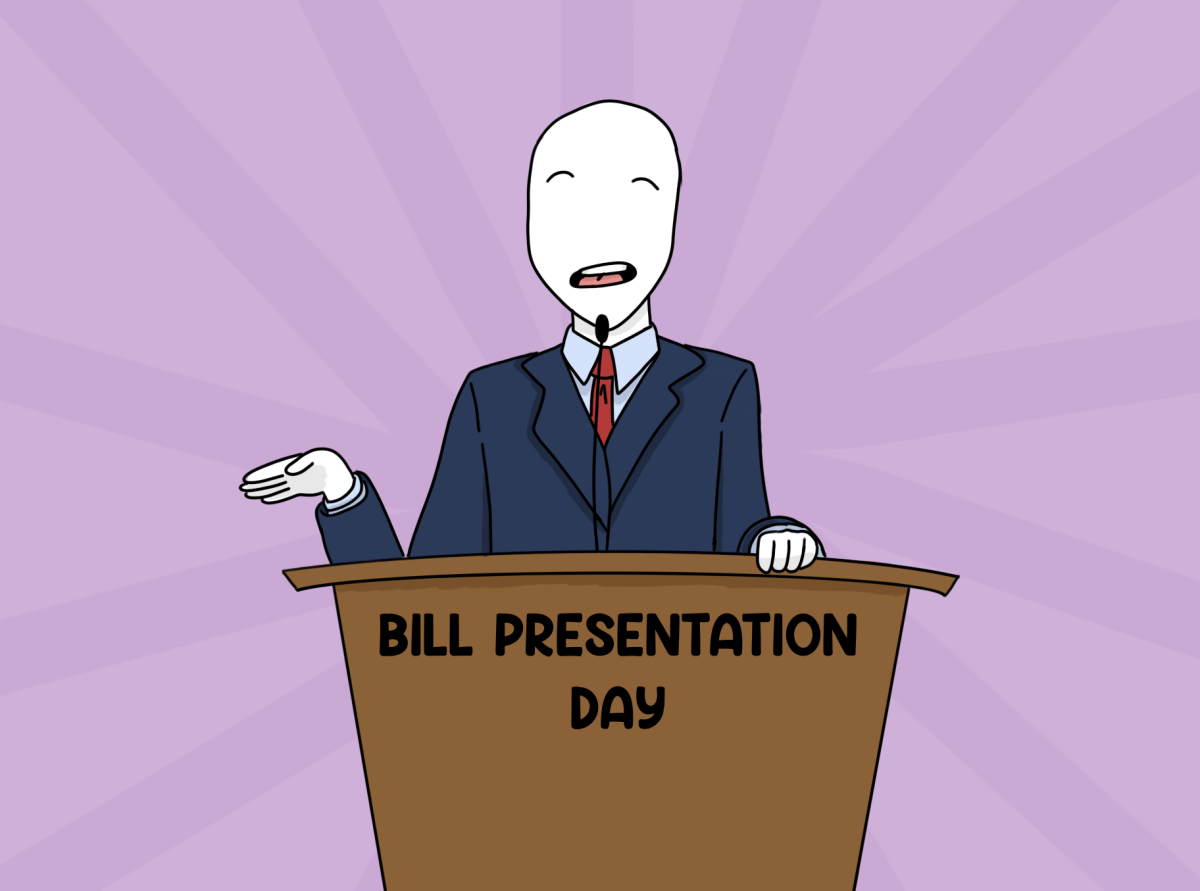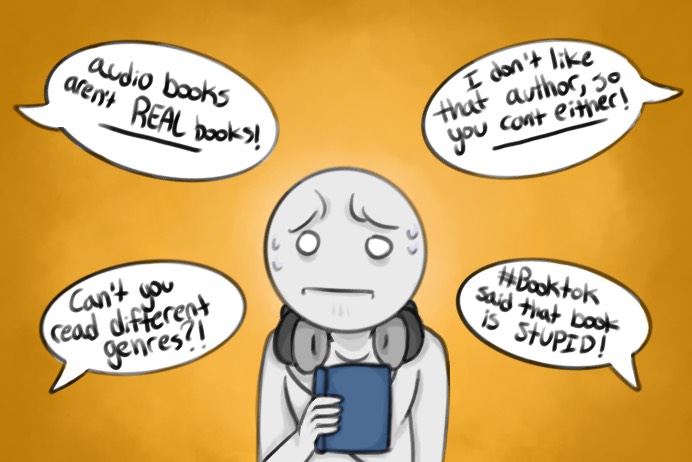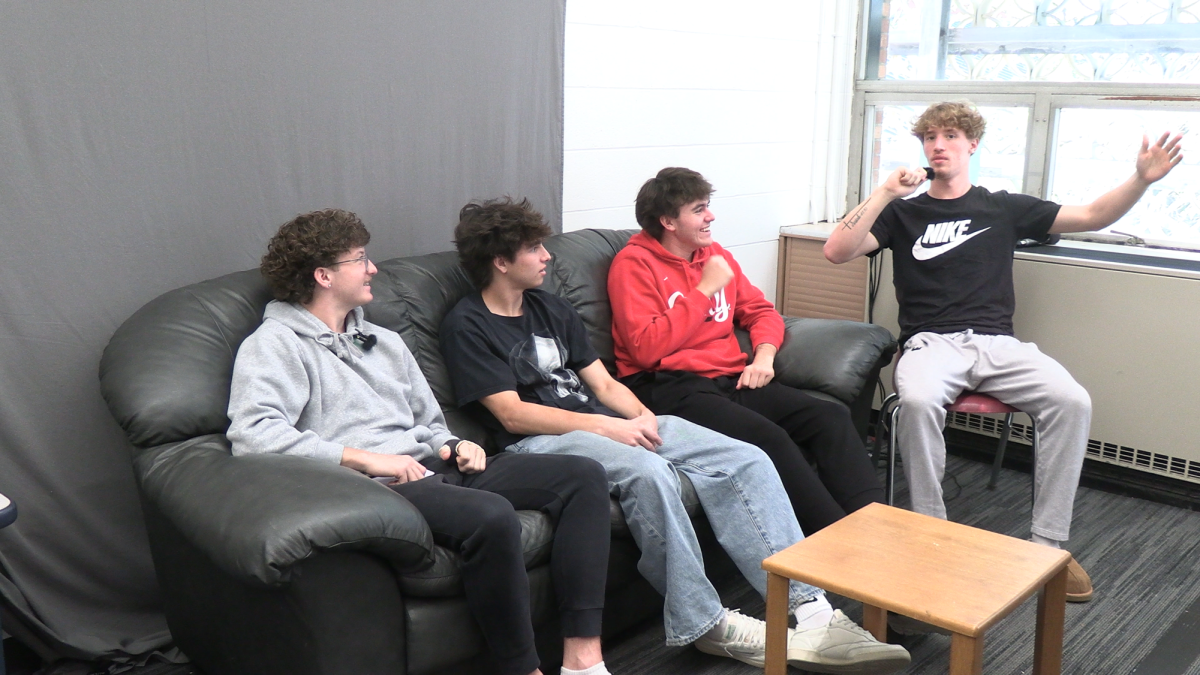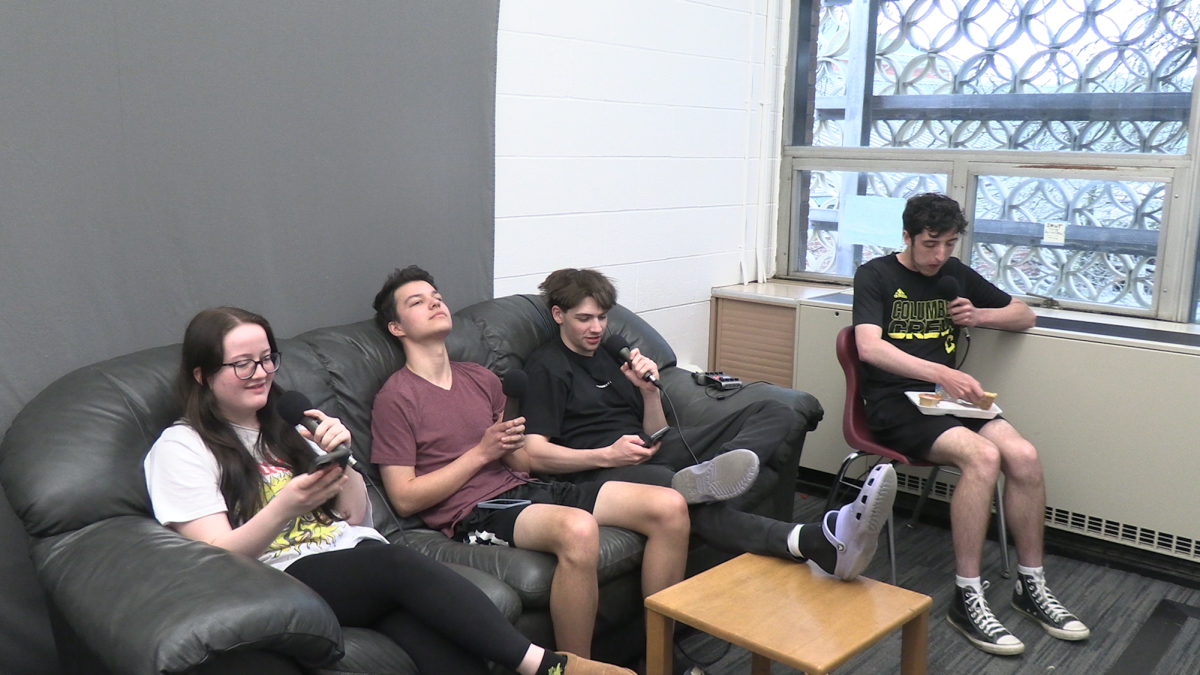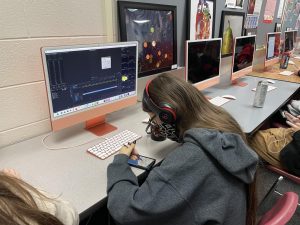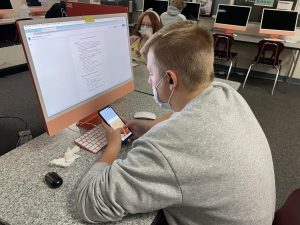The science of multitasking: why frequent phone usage during class is incompatible with learning
While many individuals think they can multitask successfully, research shows that doing any activities concurrently results in lost productivity.
December 6, 2019
In a busy digital age, multitasking has become a common practice among many individuals, including students. However, it is not quite such a productive practice as people might think.
Concurrent multitasking can be specifically defined as performing two or more tasks simultaneously, such as walking and listening to music.
Serial multitasking, also known as task switching, refers to when individuals rapidly switch between multiple tasks, though they only ever perform one task at a time. For example, a student may do a math problem, then check their email and send a text message before they return to their homework.
Both types of multitasking can pose a variety of issues for those who engage in them.
When performing a given task, the brain utilizes cognitive resources, such as attention, in order to fulfill the task. Yet there is only so much the brain can do at once.
“If you are attempting to do two tasks at the same time, you’re going to have to split up those attentional resources, giving less attention to it. So if they are very different tasks that are not very complex, mentally…That might be okay…” said Heather Johnston, a psychology professor at Columbus State Community College. “Talking while you’re washing the dishes, or watching television while you’re washing the dishes; these are two pretty simple tasks and they’re very different. You might be able to get away with that, but you’re going to suffer some on your accuracy. There may be things you miss that you have to stop yourself and say, ‘Oh, I didn’t hear that.’”
Simple tasks take up less of the brain’s cognitive capacity and therefore have a lower cognitive load, but more complex tasks have a greater cognitive load as they generally require more focus.
Although it might seem like multitasking can increase productivity, attempting to perform multiple complex tasks simultaneously can overstretch cognitive resources and be detrimental to task performance.
“The benefit [of multitasking] is that maybe you can get something, a couple things done at the same time, which feels like you’re being more efficient,” Johnston said. “But if they’re more complicated tasks, your accuracy and your speed is going to slow down if you’re trying to divide your attentional resources.”
Some people opt for task switching as opposed to regular multitasking; however, due to the need to repeatedly switch attention between tasks, research shows that task switching may not be the most efficient.
According to a 2001 study, task switching requires goal shifting and rule activation, and these processes are responsible for “switching costs,” or the amount of time taken to switch between tasks.
Goal shifting is the process of actually changing one’s motivation of wanting to do B instead of A. Rule activation involves turning off the “rules” for one task and turning on the “rules” for the next.
Switching costs are generally small in the moment, but research has suggested that people can lose up to 40% of their productivity. Additionally, “Brain Rules” by developmental molecular biologist John Medina suggests that multitasking can increase error rate by 50%.
While research may show that multitasking is not always ideal, there are contexts in which there’s more leeway to multitask.
According to a 2015 study by the University of Connecticut, multitasking while doing homework is asynchronous, meaning a student can stop to do a task such as checking their email, but then they can return to their assignment and continue without missing anything.
However, the cost of multitasking in class is much higher, because switching one’s attention to another task as the teacher continues lecturing can result in missing important information or instructions.
Divided attention is the process of giving attention to two or more sources of information at a time. It can be useful in some situations, but it is not entirely compatible with the learning process.
Encoding is the initial learning of information and the first stage of memory, though information processing varies depending on the context of the situation.
Automatic processing is done without conscious awareness, such as knowing what you ate for breakfast. Effortful processing requires conscious and active attention in order to encode information.
In the classroom, effortful processing is necessary for students to learn and store information for later retrieval. Attention enhances the processing of the attended information, but as a limited resource, people can only pay attention to so much at a given time.
Besides splitting attention, multitasking also opens the door for students to become mentally sidetracked. The concept of “task-set inertia” refers to the idea that when attention is diverted from the main task, there’s a tendency for cognition to remain with the secondary task. This can also be called attention residue.
According to a 2011 study, the possibility that students will engage in secondary tasks unrelated to school during class is increased through a combination of availability, perceived ease of use and wide range of activities accessible through digital devices.
However, some students, like senior Noah Saito, say multitasking isn’t for them.
“I don’t really multitask at all,” Saito said. “I don’t see a use for it. I feel like if I just do everything once and well; if I just focus on it and do it well, that’s fine for me.”
In contrast, multitasking is far more commonplace for other students.
“I like to have two windows open at a time. The way my brain works, it just goes back and forth,” senior Gage DeVoe said. “I’ll finish something for one class, then I’ll jump on the other class, then I’ll go back to the other class, and then back and forth until I get it done.”
DeVoe said that although he multitasks a lot, he only tends to switch between different school-related tasks and tries to avoid multitasking in class.
“I usually do my best to stay on topic and actually listen because I don’t really have time not to know what I’m doing,” DeVoe said.
For senior Madi Diaz, who said she has ADHD, multitasking helps her focus during class.
“The only way I’ve figured out I can focus is like if we’re lecturing, I do puzzles [on the computer]…just so I can focus or do something with my hands…” Diaz said. “It’s just something that helps my brain so I can pay attention to [teachers] better.”
According to Johnston, physical activities like doodling or playing with a fidget toy can be beneficial for channelling hyperactivity, especially for people with ADHD, though she notes that something like checking text messages would not be considered helpful.
Unfortunately, media multitasking is a habit for many people in the digital age and research shows that it has a significant impact on the ability to focus.
According to a 2009 Stanford study, people who multitask chronically have more difficulty focusing their attention than those who are less frequent multitaskers. They are also more susceptible to distractions even if the stimuli is irrelevant because they are less capable of filtering it out or paying attention to the relevant information.
To try to combat chronic multitasking, Johnston suggests practicing mindfulness.
“If you are practicing mindfulness, it means you’re in the moment focusing on what’s happening now. You’re not thinking about what you have to do later, you’re not thinking about what just happened,” Johnston said. “You’re not wondering if someone replied on your phone, or if you should check your email or your messages or your snaps or whatever. Mindfulness is about just doing the one thing whatever’s happening right now.”
Although multitasking can often be appealing, it’s not always efficient, safe or appropriate in certain contexts, so Johnston emphasizes the importance of making an effort to be mindful.
“Just be careful because multitasking can cause accidents…And if you’re multitasking in a relationship [and someone] is trying to talk to you and at the same time you’re doing stuff on your phone, you’re not building that relationship. Those connections are suffering,” Johnston said. “So just stop what you’re doing. Try to think to yourself, ‘I need to just do this one thing for a while.’ Nobody’s perfect, so just keep trying.”











